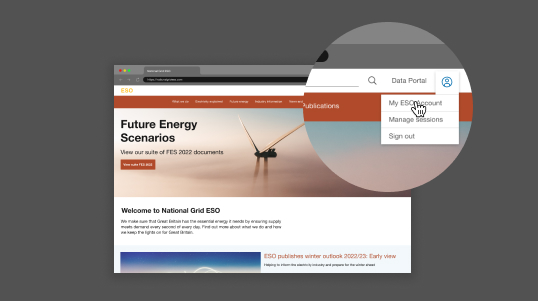
Managing reduced demand for electricity - what is our new ODFM service, and why do we need it?
20 May 2020 - 3 minute read
Over the past couple of weeks we’ve been sharing some insight into the tools and processes – including one or two new ones – that our control room has in place to keep supply and demand for electricity in balance.
In the hands of our expert engineers, these tools help us to make sure Great Britain’s electricity system is one of the most reliable in the world – even during this unprecedented time of low demand. Ahead of another predicted period of low demand this coming bank holiday weekend, Amy Weltevreden, Structuring and Optimization Manager at the ESO explains more.
Bank holidays see reduced demand for electricity, and even more so with the current lockdown measures in place. Easter, and the recent VE day bank holiday, saw demand roughly 20% down on the same time frame last year.
One of the new temporary solutions our control room has at its disposal to help us manage the system over the summer period is the Optional Downward Flexibility Management (ODFM) service. This is an opt-in service for small scale renewable generators to receive payments from National Grid ESO if we ask them to turn down or turn off their generation of electricity. The service is also open to providers who can increase their demand during the periods when the service is required.It’s seen a great take-up so far, with over 2.4GW of capacity from 170 smaller generators signed-up to respond if we make an instruction from our control room – including 1.5GW of wind,700MW of solar and almost 100MW of demand turn-up. This capacity through the ODFM service is giving us additional options to manage the transmission network by reducing the amount of electricity supplied at the local network level (hence the ‘downward flexibility’) to ensure there’s not too much power on the grid.
So, what’s different about these locally-connected generators?
Although there are a lot of big wind farms connected to our national transmission system, much of the renewable electricity generated in Great Britain comes from these smaller units – what we call distributed or embedded generation. Because they’re not connected directly to our transmission system, in the past we haven’t had as much ability to control the power they’re producing to balance the grid.
If the wind is blowing and the sun is shining, that power they’re generating is being fed into the grid and having an effect on supply and demand. For example, in the middle of the day, when sunshine is strongest and solar generation peaks, we will see national demand being suppressed. While we don’t see the effects of this generation in real-time in the same way that we can with a big transmission-connected generator, we can forecast with a good degree of accuracy the power they’ll be producing given the likely weather conditions.
The ODFM service gives us additional options to manage the transmission network by reducing the amount of electricity supplied at the local network level (hence the ‘downward flexibility’) to ensure there’s not too much power on the grid.
And this is how we’re able to extract the most value from the ODFM service. If we’re anticipating the wind blowing at a given time when we’re also expecting low demand, we’re now able to instruct these smaller scale distributed generators to reduce output to help balance the system. As with any actions we take to balance the electricity system, they’re carried out in economic order, with cheaper actions taken first, to ensure we operate the system as efficiently as possible for consumers.
Learn more about the impact of coronavirus on electricity in Great Britain and how ESO is managing reduced demand in our series of articles:
- Lockdown means reduced demand for electricity and why that’s a challenge
- The actions we’re taking to manage reduce demand
- The lockdown effect on TV viewing habits and the grid
- Is electricity greener in lockdown?
